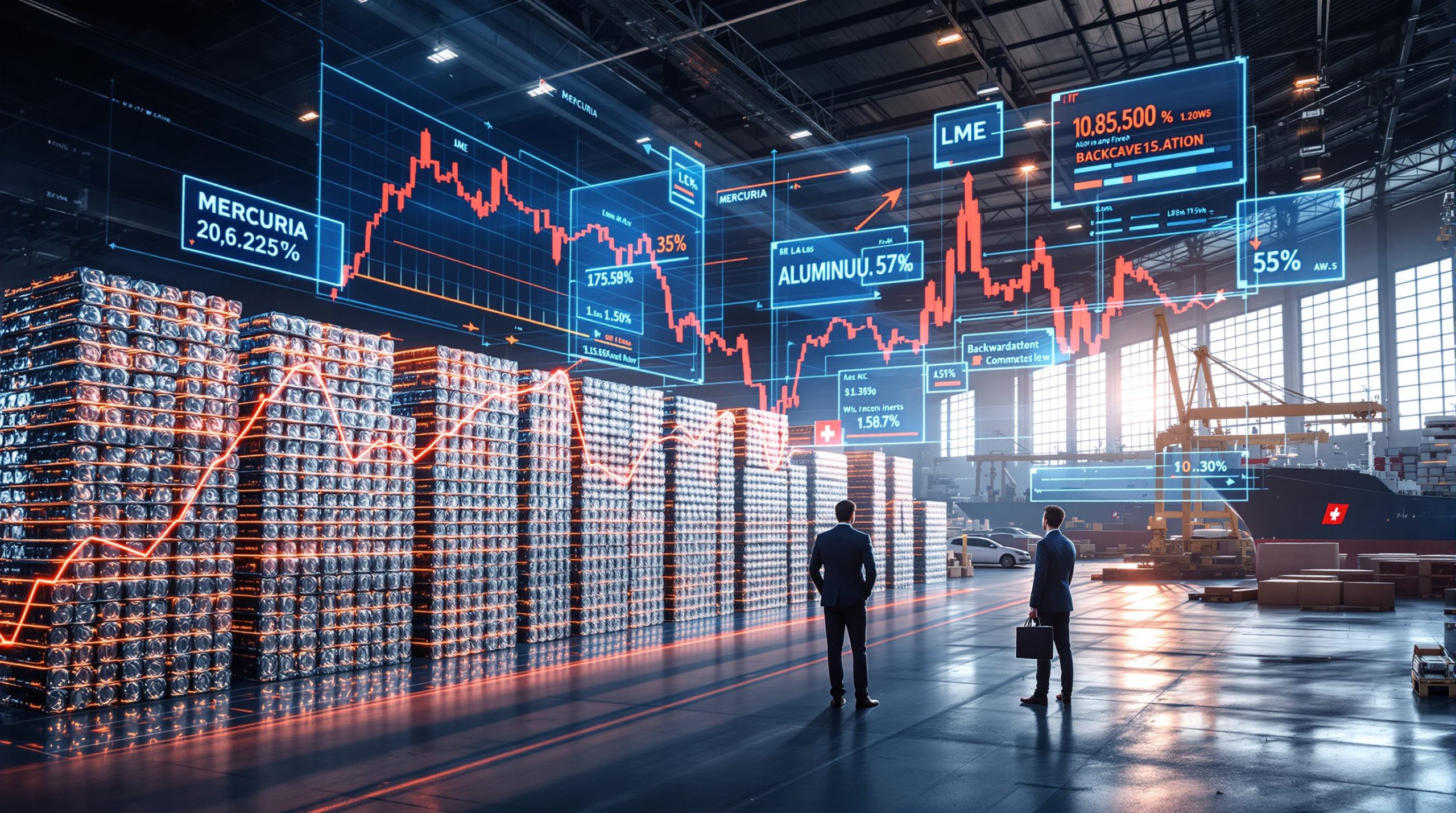Why Has Rio Tinto Been Downgraded After Its Recent Stock Performance?
Rio Tinto, one of the world's largest mining companies, has recently faced a significant shift in market sentiment. After experiencing what analysts call a "storming run" in its share price, the mining giant has been downgraded by Deutsche Bank, signaling potential challenges ahead for investors. This adjustment comes at a critical time for both the company and the broader resources sector, with implications that extend beyond just immediate share price movements.
Understanding Rio Tinto's Recent Downgrade
Deutsche Bank has revised its recommendation for Rio Tinto from 'buy' to 'hold' following a remarkable rally in the company's stock price. This downgrade, announced in early August 2025, reflects the bank's assessment that Rio Tinto's shares have now reached a valuation that adequately incorporates current business prospects and market conditions.
The revision comes after Rio Tinto experienced substantial share price appreciation primarily driven by rebounding iron ore trends. Deutsche Bank analysts have simultaneously lowered their target price for the mining giant from £53 to £51, suggesting limited upside potential at current trading levels.
As noted by financial publication Proactive Investors, the downgrade follows what they describe as a "storming run" in Rio Tinto's shares, with the stock now considered "up with events" according to Deutsche Bank's analysis. This banking terminology essentially indicates that positive future expectations are already priced into the current share value.
What Factors Led to the Analyst Downgrade?
Strong Share Price Performance
Rio Tinto's shares have experienced a remarkable upward trajectory in recent months, largely propelled by strengthening iron ore prices. This robust performance pushed the stock to levels where analysts believe much of the positive outlook is already incorporated into the share price.
The mining giant, which trades under the tickers LSE:RIO, ASX:RIO, and OTC:RTNTF, has been a beneficiary of improved commodity market sentiment. However, this very strength has led to the current valuation challenge, with Deutsche Bank analysts concluding that the shares have effectively caught up with fundamental business prospects.
Iron Ore Market Concerns
Despite previously identifying Rio Tinto as their preferred choice among iron ore producers, Deutsche Bank analysts have expressed increasing concerns about potential downside risks in the iron ore market over the coming months.
The bank's analysis points to growing risks of price corrections in what has been a surprisingly resilient iron ore market. Given that iron ore represents Rio Tinto's primary revenue driver, any significant price weakness would substantially impact the company's financial performance and possibly trigger further share price adjustments.
Valuation Considerations
While Deutsche Bank acknowledges that Rio Tinto's valuation remains reasonable by historical standards, they note that higher planned investment levels have made the shares less compelling as an investment opportunity.
This shift in capital allocation strategy has prompted the reduction in their target price and suggests a more cautious outlook on potential shareholder returns. The adjusted target price of £51 represents a modest decline from the previous £53 but signals an important shift in sentiment for a major mining stock.
How Has the Market Responded?
The downgrade announcement coincided with broader selling pressure across the mining sector. According to Proactive Investors reporting, Rio Tinto's shares experienced a 3.5% decline on the day of the announcement, though analysts attribute this primarily to weakness in copper price outlook rather than the downgrade itself.
This market reaction highlights the sensitivity of mining stocks to underlying commodity price movements. The 3.5% drop occurred "against the backdrop of a wider sector sell-off," indicating that broader market forces were at play beyond the specific downgrade of Rio Tinto.
For investors, this context is crucial in understanding whether the share price movement represents a company-specific concern or a broader sectoral trend. The synchronization with copper price weakness suggests commodity market fundamentals remain a stronger driver of short-term price movements than analyst recommendations alone.
What Changes Are Expected Under New Leadership?
New CEO's Strategic Focus
Deutsche Bank analysts anticipate that incoming CEO Simon Trott will implement several strategic initiatives aimed at optimizing Rio Tinto's operations and asset portfolio. According to Proactive Investors, these are expected to include:
- Business simplification efforts to streamline operations
- Cost reduction programs to enhance profitability
- Potential divestment of smaller, non-core assets to focus on high-performing operations
These expectations suggest a period of organizational restructuring and operational optimization rather than aggressive expansion. The transition to new leadership under Trott comes at a pivotal moment for Rio Tinto, with the company facing both commodity market uncertainties and increasing investor scrutiny around capital allocation.
The focus on potential divestments of smaller assets signals a potential strategic shift toward portfolio concentration, with greater emphasis on core, high-margin operations. This approach aligns with broader industry trends of focusing on quality over quantity in mining asset portfolios.
What Does This Mean for Investors?
Short-Term Investment Outlook
For existing shareholders, the downgrade signals that the exceptional returns experienced during the recent rally may moderate. The "up with events" characterization from Deutsche Bank suggests limited near-term upside beyond current price levels.
New investors may want to consider whether current price levels offer sufficient upside potential given the revised outlook. With the stock trading near levels that already reflect positive expectations, the risk-reward profile has shifted toward a more balanced or even cautious stance.
The target price adjustment from £53 to £51 represents approximately a 3.8% reduction in expected upside. While this may seem modest in absolute terms, it represents a meaningful directional shift from a major institutional analyst.
Long-Term Considerations
Despite the downgrade, Rio Tinto remains a significant player in the global mining industry with substantial assets and production capacity. Long-term investors should evaluate the company's strategic direction under new leadership and its positioning within evolving commodity markets.
Key factors to monitor include:
- Progress on operational simplification initiatives
- Success of cost-reduction programs
- Strategic decisions regarding asset divestments
- Capital allocation priorities between growth investments and shareholder returns
- Resilience to potential iron ore market weaknesses
These elements will likely determine whether Rio Tinto can deliver value beyond what's currently priced into the shares, particularly if commodity markets face increased volatility.
How Do Commodity Price Trends Impact Rio Tinto?
Iron Ore Dependency
As one of the world's largest iron ore producers, Rio Tinto's financial performance remains heavily influenced by iron ore price movements. The analysts' concerns about potential iron ore price weakness highlight this ongoing dependency.
While Rio Tinto has world-class iron ore operations with industry-leading margins, this concentration also creates vulnerability to market fluctuations. Deutsche Bank's growing concern about "downside risk to iron ore" underscores this key vulnerability in Rio Tinto's business model.
The iron ore market has shown surprising resilience in recent periods, but cyclical patterns suggest eventual corrections are likely. Analysts appear increasingly concerned that such a correction may materialize in the coming months, with direct implications for Rio Tinto's earnings potential.
Diversification Efforts
The company's exposure to other commodities, particularly copper, provides some diversification benefits but also introduces additional price risk factors, as evidenced by the impact of copper price weakness on recent share performance.
The 3.5% share price decline attributed mainly to copper price weakness demonstrates how Rio Tinto's valuation remains tightly linked to commodity market movements across its portfolio. While diversification reduces single-commodity risk, it doesn't eliminate the fundamental cyclicality of mining industry innovation.
What Are the Broader Market Implications?
Mining Sector Sentiment
The downgrade of a major industry player like Rio Tinto may signal shifting sentiment toward the broader mining sector, particularly for companies with significant iron ore exposure.
The coincidence of Rio Tinto's downgrade with a wider sector sell-off suggests potential revaluation across mining stocks. If Deutsche Bank's concerns about iron ore price risks materialize, other producers could face similar analyst revisions.
Investors in the mining sector should consider whether Rio Tinto's downgrade represents an isolated case or the beginning of a broader sentiment shift across resource stocks. The specific concerns about iron ore forecast could have cascading effects throughout the mining industry.
Commodity Cycle Indicators
Analyst concerns about iron ore price trends could represent early warnings about changing dynamics in the commodity cycle, which investors across the resources sector should monitor closely.
The mining industry is notoriously cyclical, and identifying turning points remains challenging even for experienced analysts. Deutsche Bank's shift from "buy" to "hold" on Rio Tinto may reflect growing concerns about where we stand in the current commodity cycle.
How Does Rio Tinto Compare to Industry Peers?
Competitive Positioning
Despite the downgrade, Deutsche Bank still considers Rio Tinto favorably positioned among iron ore majors, suggesting relative strength compared to industry peers.
According to Proactive Investors' reporting of Deutsche Bank's analysis, Rio Tinto had previously been identified as the bank's "preferred play" among iron ore producers. This suggests that even with the downgrade, the company maintains certain competitive advantages over rivals in the sector.
The key differentiating factors likely include:
- Asset quality and production costs
- Balance sheet strength
- Management effectiveness
- Portfolio diversification
These elements continue to position Rio Tinto as a sector leader, even as valuation concerns prompt a more cautious investment recommendation.
Valuation Metrics
The bank's assessment that Rio Tinto's valuation remains "reasonable" indicates that, while not undervalued, the company isn't considered significantly overpriced relative to the sector.
This nuanced valuation perspective suggests that the downgrade reflects more about limited upside potential than fundamental concerns about the business itself. The current valuation appears to appropriately balance both opportunities and risks facing the company.
FAQ Section
What was Rio Tinto's previous rating from Deutsche Bank?
Rio Tinto was previously rated as a 'buy' by Deutsche Bank before being downgraded to a 'hold' recommendation in August 2025.
What is the new target price for Rio Tinto shares?
Deutsche Bank has lowered its target price for Rio Tinto from £53 to £51 following the downgrade, representing approximately a 3.8% reduction.
What are the main concerns analysts have about Rio Tinto?
Analysts are primarily concerned about potential downside risks to iron ore prices in the coming months and the impact of higher planned investment levels on shareholder returns.
Who is taking over as Rio Tinto's CEO?
Simon Trott is the incoming CEO of Rio Tinto, and analysts expect him to focus on simplifying the business, cutting costs, and potentially divesting smaller assets.
Did Rio Tinto's share price fall solely because of the downgrade?
No, Rio Tinto's 3.5% share price decline coincided with a broader sector sell-off, with analysts attributing the drop primarily to weaker copper prices rather than the downgrade itself.
Where does Rio Tinto trade its shares?
Rio Tinto trades on multiple exchanges under different tickers: London Stock Exchange (LSE:RIO), Australian Securities Exchange (ASX:RIO), and over-the-counter in the US (OTC:RTNTF).
Why does Deutsche Bank believe Rio Tinto is "up with events"?
This market terminology indicates that the positive future expectations for Rio Tinto are already incorporated into the current share price, suggesting limited additional upside potential.
Investment Perspective
For investors evaluating Rio Tinto following this downgrade, several key considerations emerge. The shift from "buy" to "hold" doesn't necessarily signal a recommendation to sell existing positions but suggests limited near-term upside potential at current valuations.
Those with longer investment horizons should focus on:
- The execution of strategic initiatives under new CEO Simon Trott
- Developments in iron ore demand insights
- Capital allocation decisions between growth investments and shareholder returns
- Potential portfolio optimization through non-core asset divestments
The company's strong position among iron ore producers provides a solid foundation, but investors should remain mindful of commodity price risks and the potential for valuation adjustments if iron ore prices experience the downside pressures that Deutsche Bank analysts increasingly anticipate.
Disclaimer: This article is for informational purposes only and does not constitute investment advice. Commodity markets are inherently volatile, and mining stocks can experience significant price fluctuations. Past performance is not indicative of future results. Always conduct your own research or consult with a financial advisor before making investment decisions.
Want to Spot the Next Major Mining Discovery Before the Market?
Discovery Alert's proprietary Discovery IQ model instantly notifies investors of significant ASX mineral discoveries, delivering actionable insights on potential investment opportunities like Rio Tinto. Explore historic returns from major discoveries and position yourself ahead of the market by visiting our discoveries page today.




